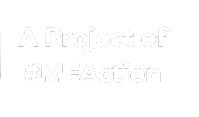- This page was created by volunteers like you!
- Help us make it even better. To learn more about contributing to MEpedia, click here.
- Join the movement
- Visit #MEAction to find support or take action. Donate today to help us improve and expand this project.
- Congratulations!
- MEpedia has got over 30 million views as of August 2022!
Muscle fasciculations
Muscle fasciculations or muscle twitches are small, rapid, involuntary contractions in that are too weak to move a limb.[1] Superficial muscle fasciculations are visible to the eye. Deeper muscle fasciculations may be invisible, and can be detected by electromyography (EMG) testing.[2]
Prevalence[edit | edit source]
A 2001 Belgian study of 2073 chronic fatigue syndrome patients found that 58.5% of patients meeting the Fukuda criteria for CFS and 64.1% of patients meeting the Holmes criteria reported muscle fasciculations.[3]
Symptom recognition[edit | edit source]
The Canadian Consensus Criteria for ME/CFS lists muscle fasciculations as a possible symptom in the list of Neurological/Cognitive Manifestations.[4]
Possible causes[edit | edit source]
Muscle fasciculations result from an involuntary firing of a single motor neuron (nerve cell) and all its innervated muscle fibers.[5]
Possible causes include:
- stress or anxiety
- excessive exercise
- fatigue
- too much caffeine intake
- poor sleep management or sleep apnea
- dehydration
- Electrolyte abnormalities[6][7]
Benign Fasciculation Syndrome[edit | edit source]
Benign Fasciculation Syndrome (BFS) is a greater than normal occurrence of fasiculations that are not associated with disease.[7]
Fasciculations are only definitely pathological when occurring in conjunction with muscle wasting or weakness of the muscle. Physiological fasciculations are common in healthy, fit young adults, particularly in the distal lower extremity muscles.[7]
Illnesses causing muscle fasiculations[edit | edit source]
Muscle fasciculations can occur in healthy people especially in the eyelid muscles, and are considered harmless, however, when fasciculations are accompanied by muscle weakness or muscle wasting, these fasciculations may indicate a neurological dysfunction.[1]
Fasiculations can sometimes be caused by systemic or other diseases; these are typically nore common than ALS. Illnesses that may cause fasiculations include:
- hyperthyroidism
- hypophosphatemia
- calcium disorders secondary to hyperparathyroidism
- low magnesium level (hypomagnesemia)
- neuromuscular disorders
- tongue fasiculations have been found in a third of patients with Amyotrophic Lateral Sclerosis[1][8]
Drugs linked to benign fasiculations[edit | edit source]
- Mestinon (pyridostigmine) which is taken by some people with ME/CFS
- cholinesterase inhibitors other than pyridostigmine
- central nervous system stimulants such as theophylline and lithium[7]
Potential treatments[edit | edit source]
Addressing any lifestyle factors such as excessive caffeine intake, and treating any disorders that are associated with the fasciculations.
Notable studies[edit | edit source]
- 2001, A definition‐based analysis of symptoms in a large cohort of patients with chronic fatigue syndrome (Full text)
Learn more[edit | edit source]
See also[edit | edit source]
References[edit | edit source]
- ↑ Jump up to: 1.0 1.1 1.2 McGee, Steven (2018). Chapter 61 – Examination of the Motor System: Approach to Weakness.
- ↑ Mills, K R (June 1, 2005). "The basics of electromyography". Journal of Neurology, Neurosurgery & Psychiatry. 76 (suppl 2): ii32–ii35. doi:10.1136/jnnp.2005.069211. ISSN 0022-3050. PMC 1765694. PMID 15961866.
- ↑ De Becker, Pascale; McGregor, Neil; De Meirleir, Kenny (December 2001). "A definition‐based analysis of symptoms in a large cohort of patients with chronic fatigue syndrome". Journal of Internal Medicine. 250 (3): 234–240. doi:10.1046/j.1365-2796.2001.00890.x.
- ↑ Carruthers, Bruce M.; Jain, Anil Kumar; De Meirleir, Kenny L.; Peterson, Daniel L.; Klimas, Nancy G.; Lerner, A. Martin; Bested, Alison C.; Flor-Henry, Pierre; Joshi, Pradip; Powles, AC Peter; Sherkey, Jeffrey A.; van de Sande, Marjorie I. (2003), "Myalgic Encephalomyelitis/Chronic Fatigue Syndrome: Clinical Working Case Definition, Diagnostic and Treatment Protocols", Journal of Chronic Fatigue Syndrome, 11 (2): 7–115, doi:10.1300/J092v11n01_02
- ↑ Killian, J.M. (2010). Electromyography. 428-435. doi:10.1016/B978-0-323-05712-7.00026-X.
- ↑ Leite, Marco Antonio Araujo; Orsini, Marco; de Freitas, Marcos R.G.; Pereira, João Santos; Gobbi, Fábio Henrique Porto; Bastos, Victor Hugo; de Castro Machado, Dionis; Machado, Sergio; Arrias-Carrion, Oscar (August 8, 2014). "Another Perspective on Fasciculations: When is it not Caused by the Classic form of Amyotrophic Lateral Sclerosis or Progressive Spinal Atrophy?". Neurology International. 6 (3): 5208. doi:10.4081/ni.2014.5208. ISSN 2035-8385. PMC 4192433. PMID 25309711.
- ↑ Jump up to: 7.0 7.1 7.2 7.3 Ramahi, A.A.; Katirji, B.; Devereaux, M. (January 1, 2014). Aminoff, Michael J.; Daroff, Robert B. (eds.). Lower Motor Neuron Lesions. Oxford: Academic Press. pp. 918–922. ISBN 978-0-12-385158-1.
- ↑ Preston, David C.; Shapiro, Barbara E. (January 1, 2013). "27 - Amyotrophic Lateral Sclerosis and its Variants". In Preston, David C.; Shapiro, Barbara E. (eds.). Electromyography and Neuromuscular Disorders (3rd ed.). London: W.B. Saunders. pp. 417–431. ISBN 978-1-4557-2672-1.

